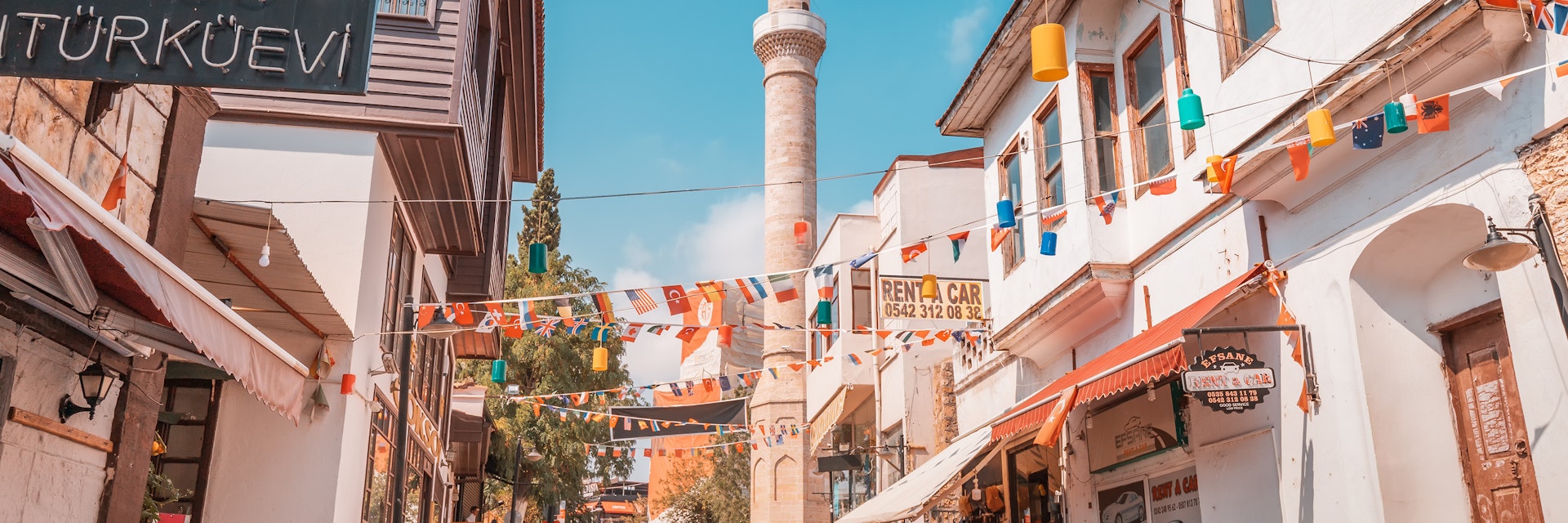Antalya's historic district is a sight in itself and you could happily spend half a day strolling the narrow lanes here while admiring the mix of finely restored and creakily dilapidated Ottoman-era architecture.
The district begins at the main gate, Kale Kapısı, which is marked by the old stone Saat Kulesi and statue of Attalus II, the city's founder. To the north is the İki Kapılar Hanı, a sprawling covered bazaar dating to the late 15th century. Walk south along Uzun Çarşi Sokak, the street that starts opposite the clock tower. Immediately on the left is the 18th-century Tekeli Mehmet Paşa Camii, a mosque built by the Beylerbey (Governor of Governors), Tekeli Mehmet Paşa, and repaired extensively in 1886 and 1926. It's currently being renovated but note the beautiful Arabic calligraphy in the coloured tiles above the windows and along the base of the dome.
Wander further into this protected zone, where many of the gracious old Ottoman houses have been restored and converted into pensions, boutique hotels and shops. To the east, at the top of Hesapçi Sokak, is the monumental Hadrian's Gate, also known as Üçkapılar or the 'Three Gates', erected for the Roman emperor's visit to Antalya in 130 AD.
The Roman Harbour at the base of the slope was Antalya's lifeline from the 2nd century BC until late in the 20th century, when a new port was constructed about 12km to the west, at the far end of Konyaaltı Plajı. The harbour was restored during the 1980s and is now a marina for yachts and excursion boats. An elevator descends the cliff to the harbour from the western end of Cumhuriyet Meydanı.
At the southwestern edge of °˛ą±ô±đľ±Ă§ľ±, on the corner of large, attractive, flower-filled KaraalioÄźlu Parkı rises Hıdırlık Kalesi, a 14m-high tower dating to the 1st or 2nd century AD. It was built as a mausoleum and later, due to its excellent position above the bay, played an important role in the city's defences as a watchtower and lighthouse.




